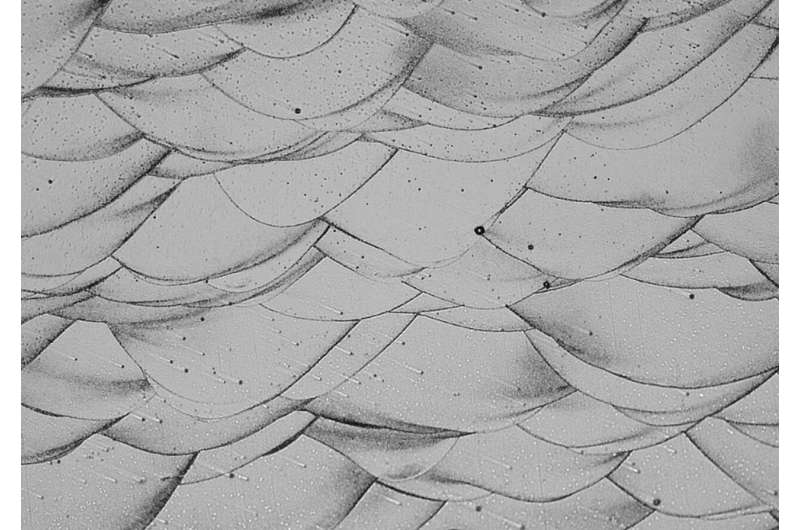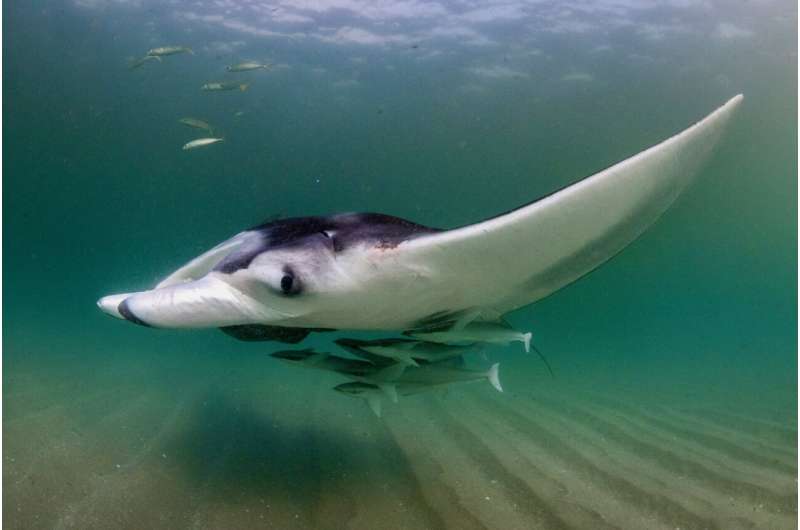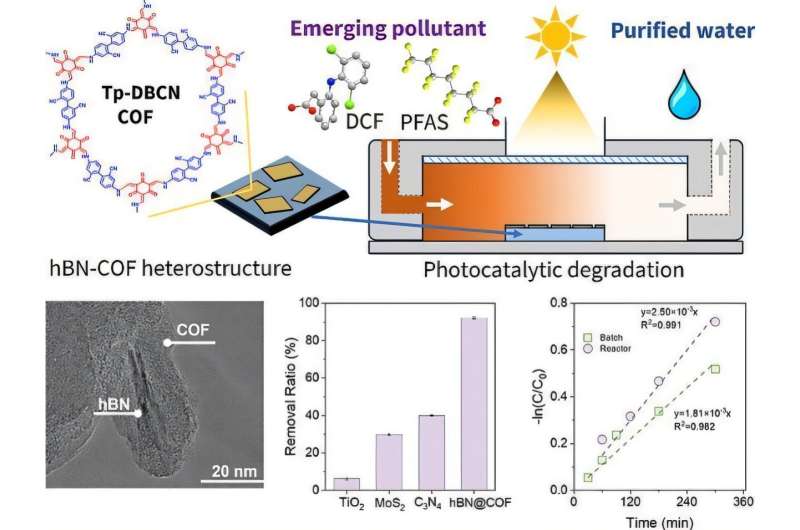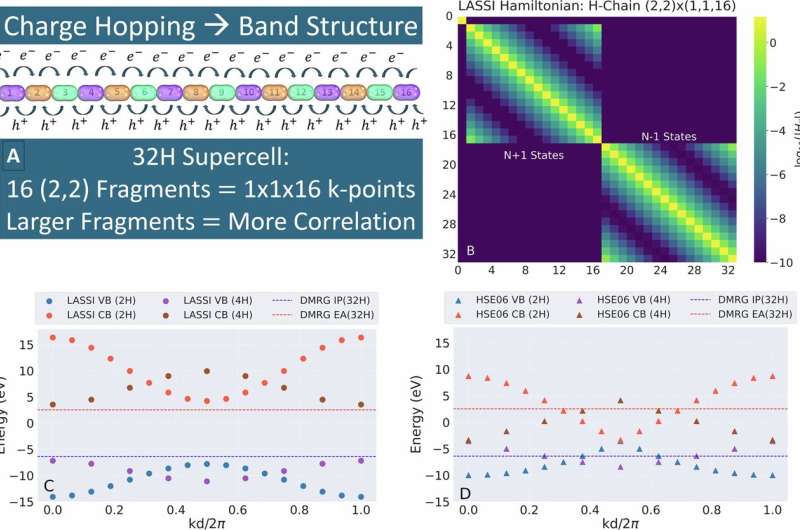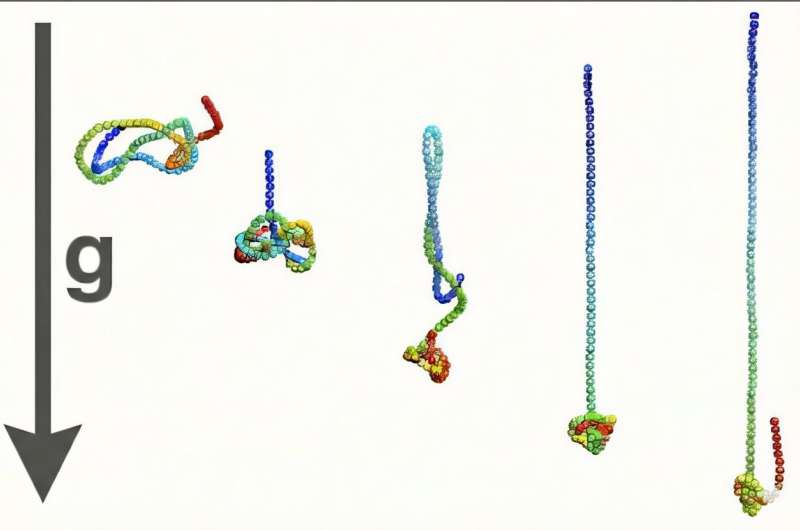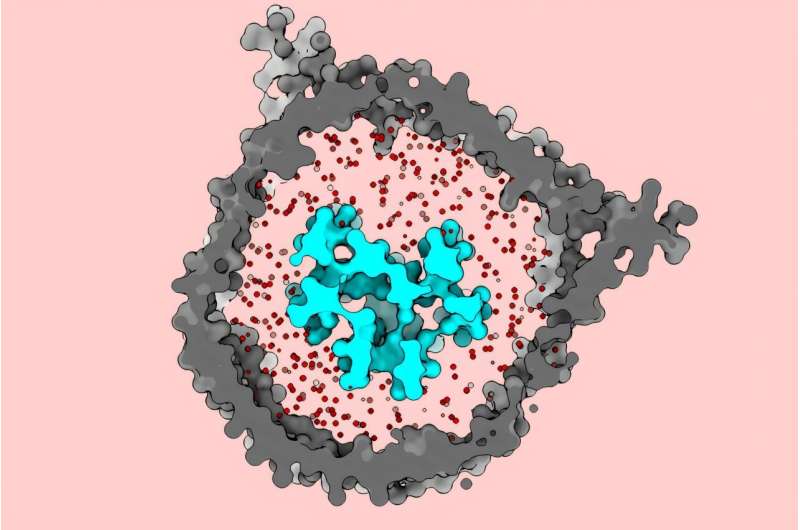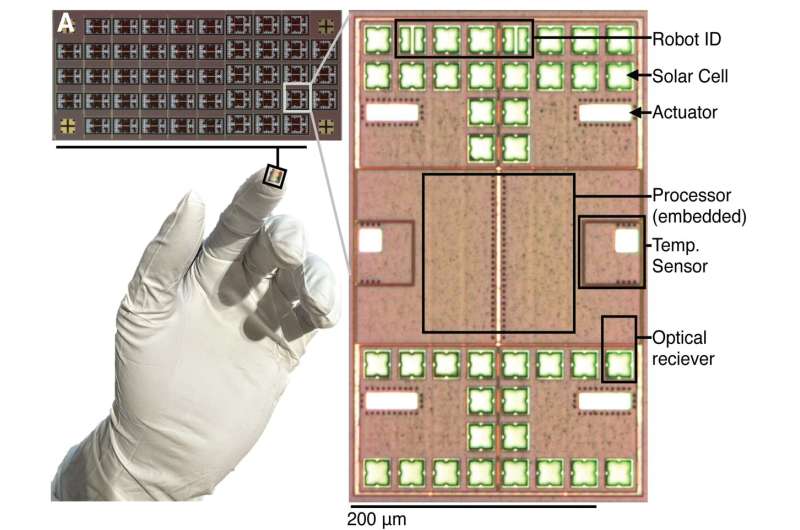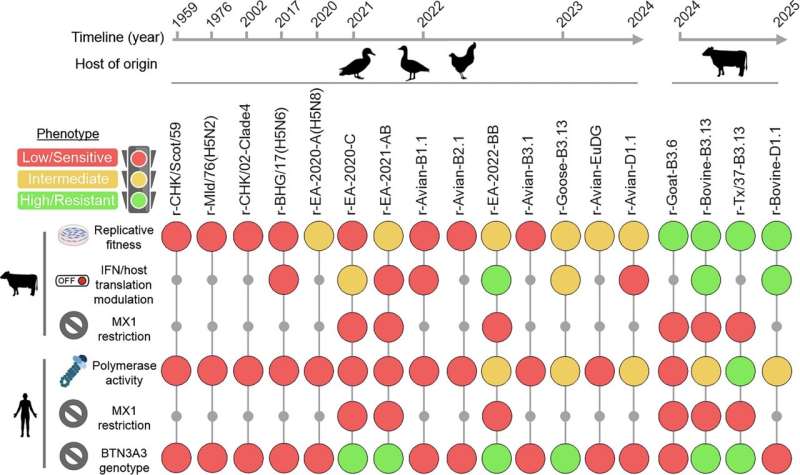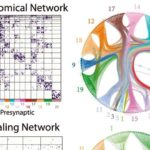Mysterious moon rust explained by oxygen coming from Earth’s ‘wind’
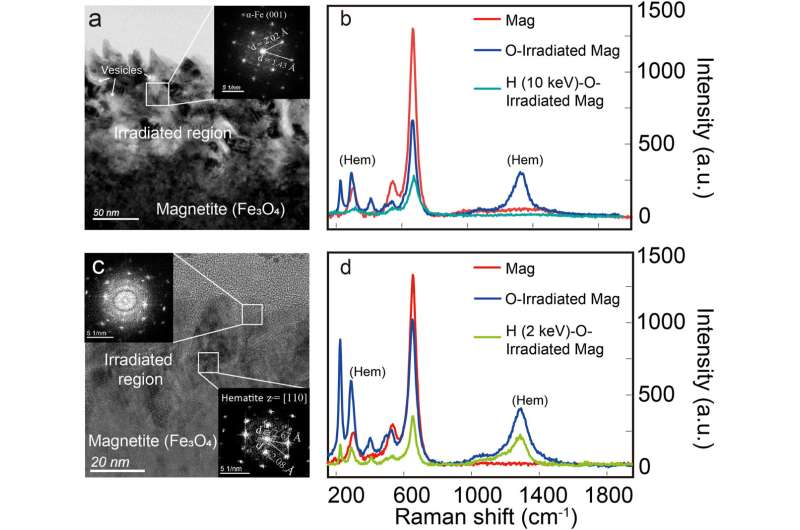
by Krystal Kasal, Phys.org
edited by Gaby Clark, reviewed by Robert Egan
Editors’ notesThe chemical and microstructure characteristics of O-irradiated magnetite (Mag) after H-implantation. Credit: Geophysical Research Letters (2025). DOI: 10.1029/2025gl116170
In 2020, scientists reported the detection of hematite, an iron oxide mineral otherwise known as rust, distributed through the higher latitudes of the moon, particularly on the nearside. This came as a surprise, considering the low concentrations of oxygen—which is required for the formation of rust—on the moon. Researchers proposed several theories to account for the origins of the oxygen in moon rust, including the degassing of volatiles from lunar magma, asteroids, comets, or large impact events.
However, the only explanation that could account for the distribution patterns of the hematite was that oxygen ions were being transported to the moon by Earth’s magnetosphere. This occurs during the five or so days per month when Earth sits between the sun and moon, allowing parts of its atmosphere to be blown onto the surface of the moon. The phenomenon is referred to as “Earth wind.” At other times, the moon is primarily exposed to the low energy hydrogen ions from solar wind.
A group of scientists has recently provided more evidence backing up this theory. The study, published in Geophysical Research Letters, sought to test whether Earth wind could produce the hematite by setting up a series of lab experiments mimicking the conditions on the lunar surface. The team did this by irradiating various iron-bearing minerals found on the moon with oxygen and hydrogen at energies expected from particles in Earth wind, as well as hydrogen ions, like those from solar wind.
Results showed that oxygen ions, similar to those from Earth wind, can oxidize metallic iron, iron sulfide, and ilmenite found in lunar regolith to form hematite.
“Although these iron‐bearing minerals may occur as micro‐particles or small crystals in lunar regolith, they can undergo direct oxidation upon exposure to Earth wind. The resulting hematite on the outer surface of regolith particles is readily detectable via optical spectrometry,” the study authors explain.
https://googleads.g.doubleclick.net/pagead/ads?gdpr=0&us_privacy=1—&gpp_sid=-1&client=ca-pub-0536483524803400&output=html&h=280&slotname=8188791252&adk=1645945215&adf=308666314&pi=t.ma~as.8188791252&w=750&fwrn=4&fwrnh=0&lmt=1758799061&rafmt=1&armr=3&format=750×280&url=https%3A%2F%2Fphys.org%2Fnews%2F2025-09-mysterious-moon-rust-oxygen-earth.html&fwr=0&rpe=1&resp_fmts=3&wgl=1&aieuf=1&uach=WyJXaW5kb3dzIiwiMTkuMC4wIiwieDg2IiwiIiwiMTQwLjAuNzMzOS4xMjgiLG51bGwsMCxudWxsLCI2NCIsW1siQ2hyb21pdW0iLCIxNDAuMC43MzM5LjEyOCJdLFsiTm90PUE_QnJhbmQiLCIyNC4wLjAuMCJdLFsiR29vZ2xlIENocm9tZSIsIjE0MC4wLjczMzkuMTI4Il1dLDBd&abgtt=6&dt=1758799060965&bpp=1&bdt=166&idt=51&shv=r20250922&mjsv=m202509180101&ptt=9&saldr=aa&abxe=1&cookie=ID%3Df22668bce9793ae4%3AT%3D1735196613%3ART%3D1758798875%3AS%3DALNI_Mb4Xpwl1SO1AcvqroR6xccDm_sheQ&gpic=UID%3D00000f7c5320f40b%3AT%3D1735196613%3ART%3D1758798875%3AS%3DALNI_Mb1dz_DHiT2yDzXLMaB9CDkQl4XGg&eo_id_str=ID%3D1241933dda87baba%3AT%3D1750839581%3ART%3D1758798875%3AS%3DAA-AfjZwPuiSAour3k16ZA1JtXua&prev_fmts=0x0&nras=1&correlator=292856862576&frm=20&pv=1&rplot=4&u_tz=240&u_his=3&u_h=1080&u_w=1920&u_ah=1032&u_aw=1920&u_cd=24&u_sd=1&dmc=8&adx=448&ady=2069&biw=1905&bih=945&scr_x=0&scr_y=0&eid=31094806%2C95366795%2C95344787&oid=2&pvsid=8464374774695848&tmod=1785916501&uas=0&nvt=1&ref=https%3A%2F%2Fphys.org%2F&fc=1920&brdim=0%2C0%2C0%2C0%2C1920%2C0%2C1920%2C1032%2C1920%2C945&vis=1&rsz=%7C%7CpeEbr%7C&abl=CS&pfx=0&fu=128&bc=31&bz=1&td=1&tdf=2&psd=W251bGwsbnVsbCxudWxsLDNd&nt=1&ifi=2&uci=a!2&btvi=1&fsb=1&dtd=134
The researchers also wanted to determine whether the hydrogen ions would reduce the hematite back to metallic iron. To do this, they irradiated hematite with both high-energy hydrogen, mimicking hydrogen found in Earth wind, and low-energy hydrogen ions, like those from the sun.
Results showed that the high-energy hydrogen ions are capable of reducing hematite back to metallic iron, while low-energy hydrogen ions are largely ineffective. The team says that the retention of hematite on the lunar surface depends on both the energy and the relative flux ratio of oxygen and hydrogen ions from Earth wind.
“The retention and preferential distribution of hematite in high‐latitude regions require careful consideration. Although the lunar surface outside Earth’s magnetosphere is continuously bombarded by solar wind protons at fluxes approximately 100 times higher than those in Earth wind, our low‐energy hydrogen implantation experiments demonstrate limited reduction efficiency due to the shallower penetration depth, which does not fully encompass the oxidized region. In contrast, higher‐energy protons achieve complete penetration, enabling more thorough reduction,” the authors say.
Overall, the study provides strong support for the Earth wind theory. However, laboratory conditions may not fully replicate the complex lunar environment. The study authors suggest that future moon missions and simulations of Earth wind ion interactions can help deepen the understanding of how these reactions take place.
Written for you by our author Krystal Kasal, edited by Gaby Clark, and fact-checked and reviewed by Robert Egan—this article is the result of careful human work. We rely on readers like you to keep independent science journalism alive. If this reporting matters to you, please consider a donation (especially monthly). You’ll get an ad-free account as a thank-you.
More information: Xiandi Zeng et al, Earth Wind‐Driven Formation of Hematite on the Lunar Surface, Geophysical Research Letters (2025). DOI: 10.1029/2025gl116170
Journal information: Geophysical Research Letters
© 2025 Science X Network



